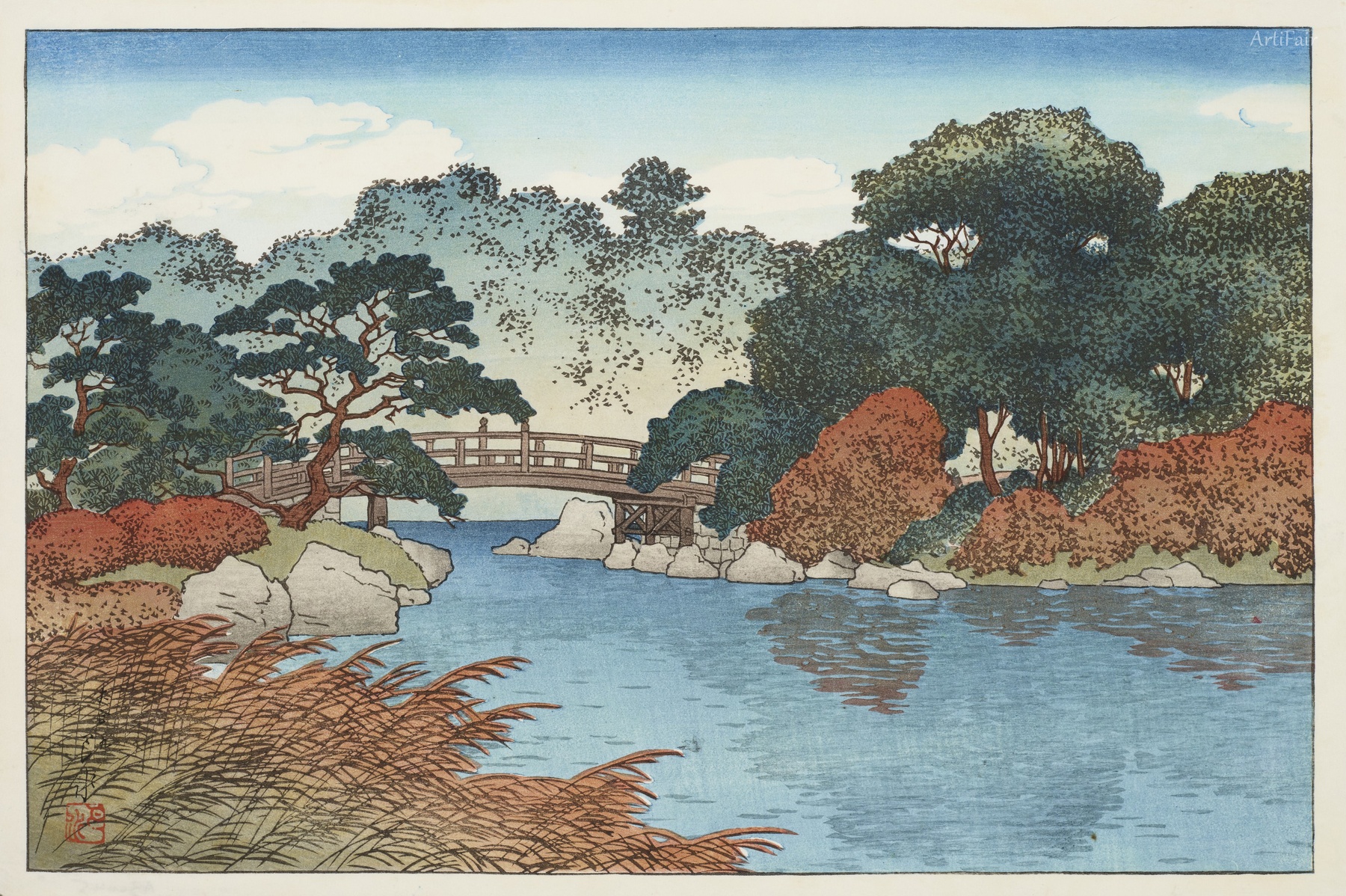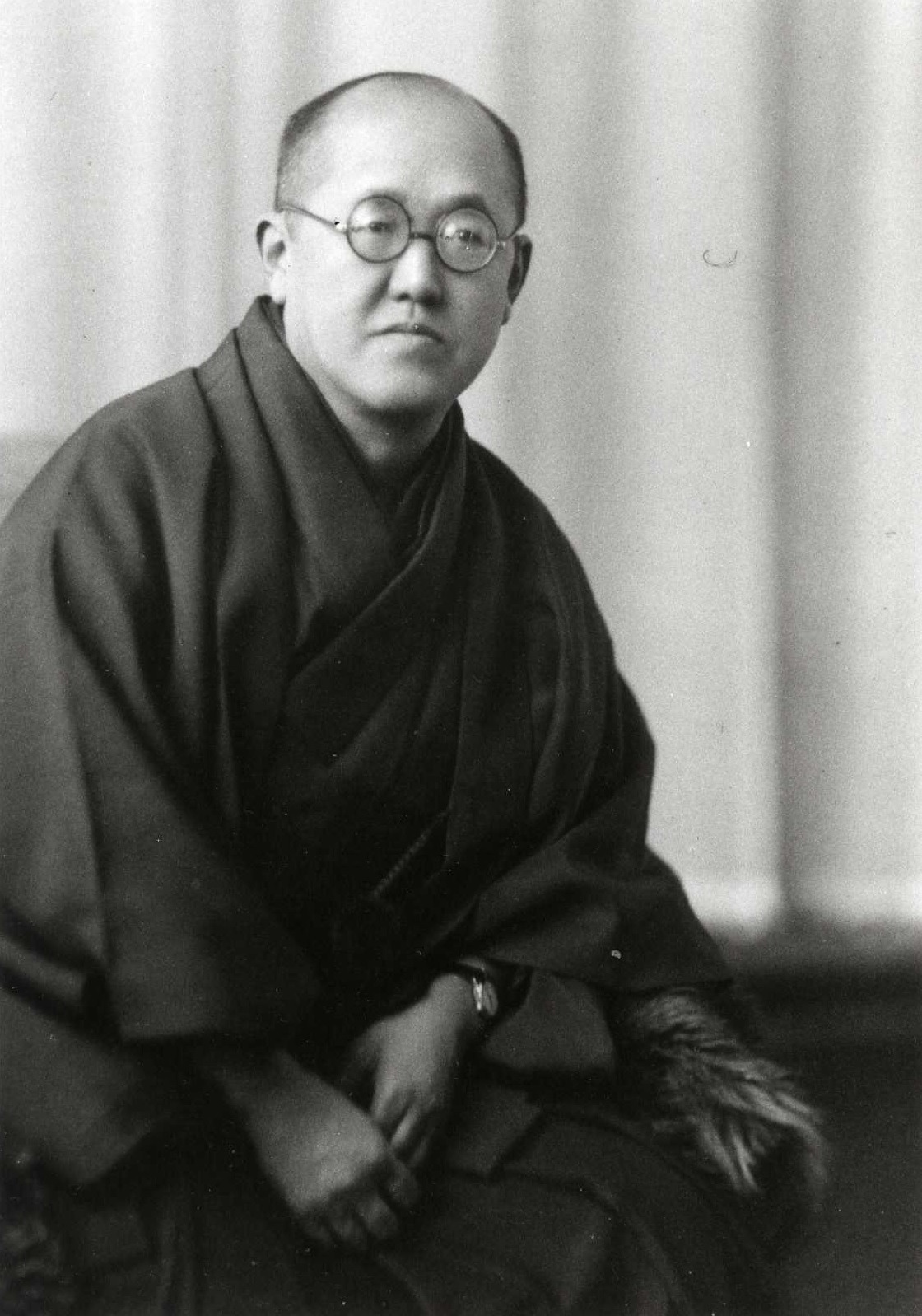

Hasui Kawase
JP
384
Artworks
1883 - 1957
Lifespan
Artist Biography
Hasui Kawase (川瀬 巴水, May 18, 1883 – November 7, 1957) stands as one of Japan's most significant and prolific woodblock printmakers of the 20th century. A leading figure in the shin-hanga ("new prints") movement, Hasui masterfully blended traditional Japanese aesthetics with Western artistic influences, particularly in his evocative landscape prints. Born Bunjiro Kawase in Shiba, Tokyo, he became renowned for his ability to capture the serene beauty and atmospheric nuances of Japan's diverse scenery, depicting moments of dawn, dusk, rain, snow, and moonlight with unparalleled poetic sensibility. His works, often characterized by their tranquility and meticulous detail, sought to portray an idealized yet relatable vision of Japan during a period of rapid modernization, appealing to both domestic and international audiences.
Hasui's early life presented challenges to his artistic aspirations. His parents, who ran a silk and thread wholesale business, initially discouraged his pursuit of art, urging him to take over the family enterprise. However, the business's bankruptcy when Hasui was 26 became a pivotal moment, freeing him to dedicate himself to art. He had already received some early training from painter Aoyagi Bokusen and studied brush painting with Araki Kanyu. Seeking formal instruction, he approached Kiyokata Kaburagi, a prominent Nihonga painter, but was initially advised to study yōga (Western-style painting). Hasui followed this counsel, studying with Okada Saburōsuke for two years. His persistence paid off when he reapplied to Kaburagi and was accepted, receiving the art name "Hasui," meaning "water gushing from a spring," a name that resonated with his family name "Kawase" (river rapids) and foreshadowed the fluidity and natural themes of his future work. His uncle, Kanagaki Robun, a noted author and a pioneer in manga, may have also provided an early creative influence.
The true turning point in Hasui's career came with his foray into woodblock printmaking. Inspired by an exhibition of Shinsui Itō's "Eight Views of Lake Biwa," Hasui approached Shinsui's publisher, Shōzaburō Watanabe, a key proponent of the shin-hanga movement. This meeting in 1918 marked the beginning of a long and fruitful collaboration. Watanabe published Hasui's first experimental prints, followed by successful series such as "Twelve Scenes of Tokyo" (1919), "Eight Views of the Southeast" (1919), and the initial "Souvenirs of Travel" (1919). Tragedy struck in 1923 when the Great Kantō earthquake devastated Tokyo, destroying Watanabe's workshop, including Hasui's completed woodblocks and, devastatingly, over 188 of his personal sketchbooks filled with invaluable landscape drawings. Hasui himself lost his home in the disaster.
Despite this profound loss, Hasui demonstrated remarkable resilience. Later in 1923, he embarked on extensive sketching tours through the Hokuriku, San'in, and San'yō regions of Japan. The sketches from these journeys, particularly a 102-day trip, became the foundation for many subsequent prints, including his third "Souvenirs of Travel" series (1924). This period saw a noticeable increase in the vividness of his colors and the realism of his compositions, further enhancing his reputation. His 1925 print, "Zōjō-ji in Shiba" from the "Twenty Views of Tōkyō" series, became an immense success and one of his best-selling works. Another popular piece, "Moon at Magome," followed in 1930. Through his continuous work with Watanabe and the efforts of connoisseurs like the American Robert O. Muller, Hasui's prints gained significant international acclaim, especially in the United States, where he was considered a leading landscape printmaker by the mid-1930s.
Hasui's artistic style is characterized by his almost exclusive focus on landscapes and townscapes, drawn from direct observation during his travels. Unlike earlier ukiyo-e masters who often depicted famous historical or tourist sites (meisho-e), Hasui frequently chose tranquil, unassuming locales, capturing the quiet beauty of an urbanizing Japan. He was a master of depicting atmospheric conditions—the gentle fall of snow, the soft glow of twilight, the reflective sheen of rain-slicked streets, and the serene stillness of moonlit nights. Though he considered himself a realist and incorporated his yōga training in perspective and naturalistic light, his works evoke a deep poetic and emotional response. He emphasized the crucial collaborative nature of shin-hanga, requiring "telepathic communication" between the designer, carver, and printer to achieve the desired effect. While figures are rare in his prints, when present, they are often solitary, adding to the scene's scale and contemplative mood, sometimes interpreted as reflections of his own solitude or the grandeur of nature over humanity.
Over his nearly forty-year career, Hasui Kawase designed approximately 620 woodblock prints. His dedication to his craft and his contribution to Japanese culture were formally recognized in 1956 when he was designated a Living National Treasure. This honor was partly based on his print "Snow at Zōjō-ji" (1953), the creation process of which was meticulously documented by the government. Despite facing another personal tragedy when his home was destroyed again during World War II air raids, Hasui continued to create. He passed away from cancer on November 7, 1957, at the age of 74. Often referred to as the "Showa Hiroshige" or the "poet of travel," Hasui's legacy endures. His prints are celebrated for their technical brilliance, serene beauty, and nostalgic portrayal of Japan, and are highly sought after by collectors, including notable figures like Steve Jobs. His work is held in prestigious museums worldwide, solidifying his status as one of the last great masters of Japanese landscape printmaking.